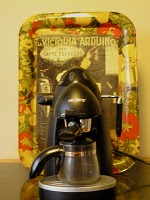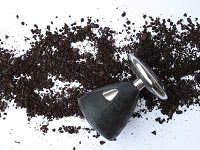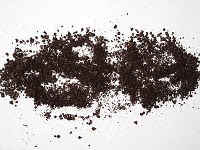Let’s face it – we’re used to baristas dumping steamed milk over espresso, slapping on a plastic lid and sending us on our way.
Once we’re on the road, there’s virtually no turning back. If the milk’s cold or the espresso is burnt, we deal with it.
But let’s think back to the history of coffee – a history that is marked by luxury and refinement.
The aesthetic and cultured qualities of coffee are perhaps best conveyed through latte art, a sophisticated technique of creating pictures using espresso and foamed milk.
I set out to investigate the nuances of this technique at Cornerstone in McMinnville, Ore. My mission: to find out what it takes to make latte art (and to give it a try myself).
Good latte art results from the crema (the caramel-colored foam of the espresso) and the foam (specifically microfoam) of the milk mixing together.
There are two types of latte art: free pouring and etching. In free pour, the art is made as the barista pours the milk. In etching, the barista creates the contrast of crema and foam and then draws in the image using a pointed tool.
Today, we’re learning about the free pour.
Basic tools:
-An espresso machine
-A milk pitcher with straight walls and a pointed spout.
-A 12 to 16 ounce cup.
The process:
1. Pour cold milk into the pitcher. Breve works best because of its fat content, but even nonfat can produce microfoam.
2. Insert thermometer or place hand to side of pitcher before steaming.
3. Heat until 80 degrees Fahrenheit before placing wand the side of the pitcher to aerate. Continue steaming until it reaches between 150 and 160 degrees.
4. Continue swirling the milk in its pitcher to prevent the microfoam from settling on top of the milk. Pull your shot of espresso.
5. Pour the espresso into your cup and begin pouring until the cup is half-full. Begin pulling the pitcher up as you shake it back and forth to create a rosetta design.
6. Once the milk reaches the top, pour the milk up the center of the pattern.
Art may be pretty, but it’s never too pretty to drink.
Check out my video on latte art here.










